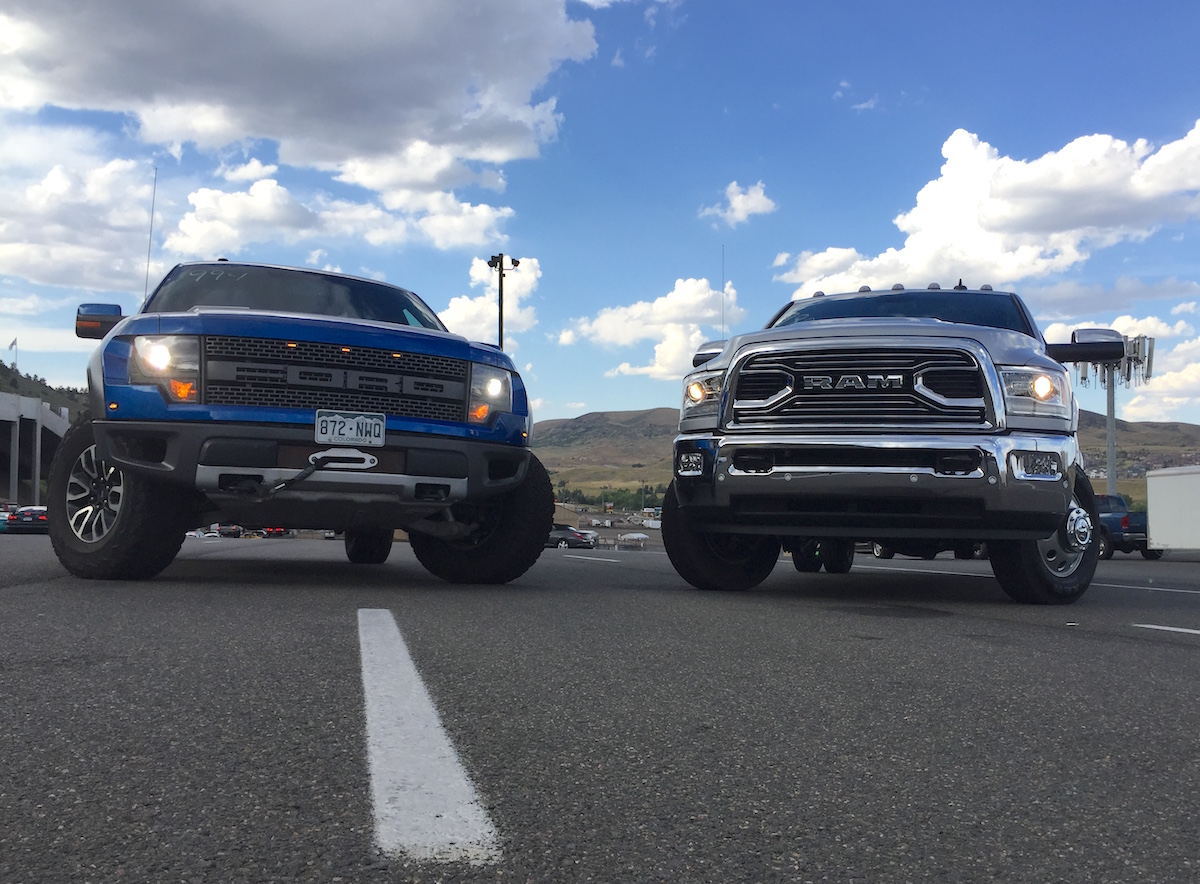
Elon Musk (Tesla CEO) recently replied to a fan comment about a heavy duty frame twist demonstration, featuring a Ford F-350 dually: “That’s why Cybertruck has active suspension height & damping control.”
The frame twist demonstration reference in relation to the Tesla Cybertruck and the reply from Elon Musk do no not make much sense.
First, let’s describe the frame twist demonstration that was originally done in 2011, over eight years ago.

The HD truck “twist ditch” demonstration in question was a paid program organized by Chevrolet/GM. It shows how several 1-ton and 3/4-ton trucks respond to an extreme test that simulates crossing a ditch under load.
This test demonstrates how the frame, chassis, and suspension respond to a diagonal ditch crossing under load. Each 1-ton truck was loaded with about 3,000 lbs payload in the bed. It’s not just about suspension articulation, this test is more about the frame.
A frame that is able to twist is actually not a bad thing, as long as it’s controlled. For example, the Toyota Tacoma has a specifically designed frame with three separate section to allow for a little more flex and more compliant off-road performance.
Naturally, heavy duty trucks have much heavier, bigger, and stiffer frames. This is needed to carry heavy weights. Many of these 1-ton Ford F-350, GM 3500, or Ram 3500 trucks have payload capacities between of over 7,000 lbs.
The old trucks featured in this 2011 test have frames designed 10 or 20 years ago. Weight rating were a bit lower then, but some frame twist is not a bad thing. The turbo-diesel engines make a lot of torque (and twist), and some frame twist allow all wheels to remain on the ground. Ever seen a big 18-wheeler semi truck accelerating from a stop and one of its front wheels raising a little in the air? Again, it’s frame twist.
The latest 2017+ Ford Super Duty trucks and other heavy duty trucks have redesigned frames that are insanely more stiff than before. They are generally made of fully-boxed steel section with many cross members. The latest design of stiffer frames allows the engineers to tune the suspension for a higher load carrying capacity and also a better ride comfort.
Elon Musk says that the Tesla Cybertruck air suspension will help with such a twist ditch extreme test. I don’t get the relevance. The air suspension may keep the Cybertruck more level, but the structure twist under load is still there. I imagine to Cybertruck exoskeleton unibody structure made out of ultra-hard stainless steel will not allow for much twist, but this remains to be tested and seen.
If the Tesla Cybertruck is to be a true truck and compete against a Ford F-150 or a Ford F-350, then it must address questions such load carrying capacity across all models (RWD, dual-motor AWD, and tri-motor AWD). What happens to the driving range with a load or heavy trailer? How easy it to load/unload the truck? How easy is it to hook up a trailer? Will the Cybertruck allow for a use of a weight distribution hitch? How about off-road driving range, suspension travel, RTI, and more?
Tesla says the the Cybertruck will have many autonomous driving modes/features, including “trailer docking”. I imagine this to help with backing up a trailer. I cannot wait to learn more about this feature.
Elon Musk referred to the Cybertruck as “car” several time on stage during the debut event on Nov 21, 2019. If it’s to be a true truck, it needs to be referred to as “truck” with the understanding that it’s not simply to move people and light loads.
One Tesla enthusiast @Real_John_D brought up a comment about a heavy duty truck frame twist test (see below).
















![Which is More Reliable: 3.5L EcoBoost or 5.0L V8? [Reader Question] Second-generation 3.5-liter EcoBoost engine](https://tfltruck.com/wp-content/uploads/2016/05/Second-generation-35-liter-EcoBoost-engine.jpg)
![Which Silverado Engine to Get: 5.3L or 6.2L V8? [Ask TFLTruck] 2016 chevy silverado](https://tfltruck.com/wp-content/uploads/2015/10/2016-chevy-silverado-grille.jpg)
